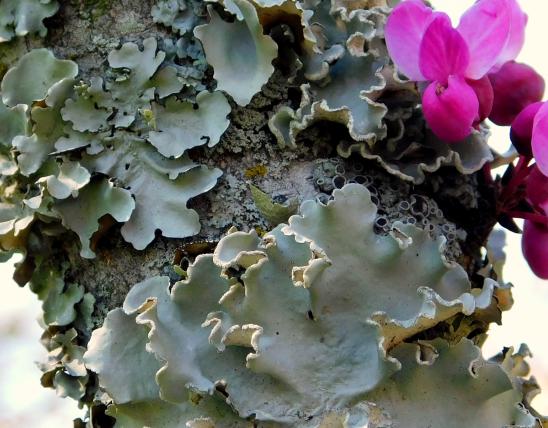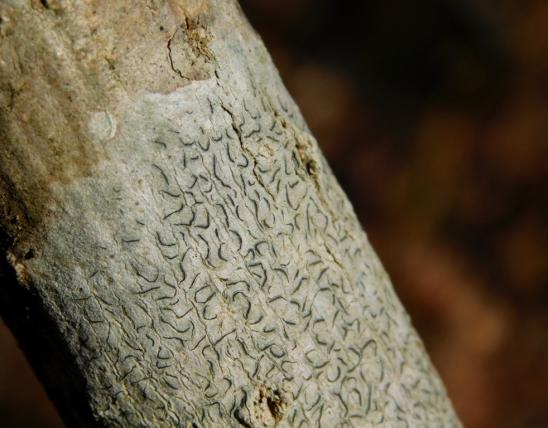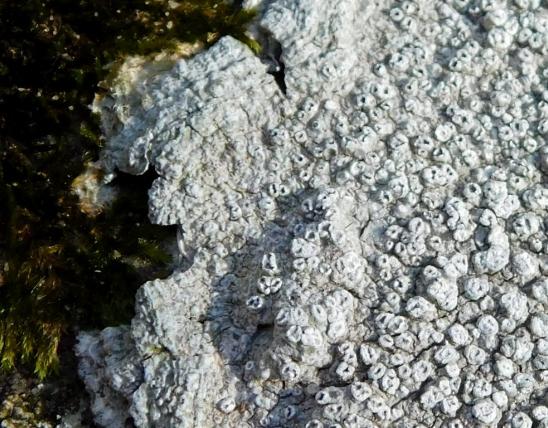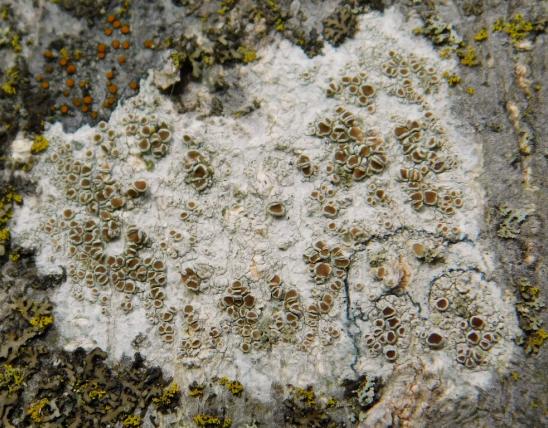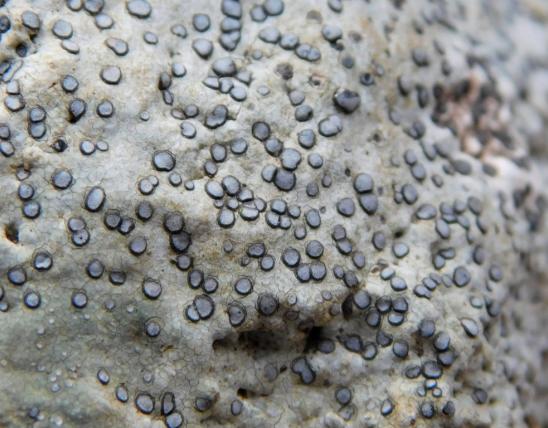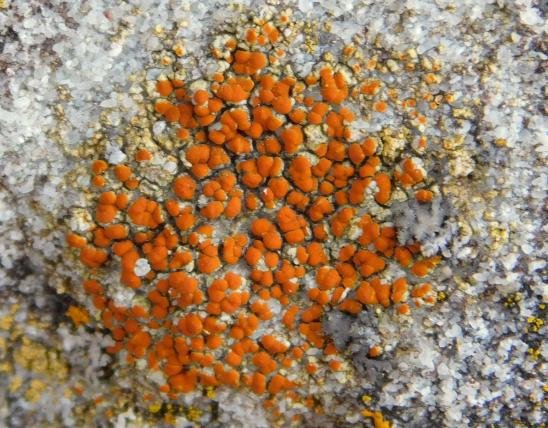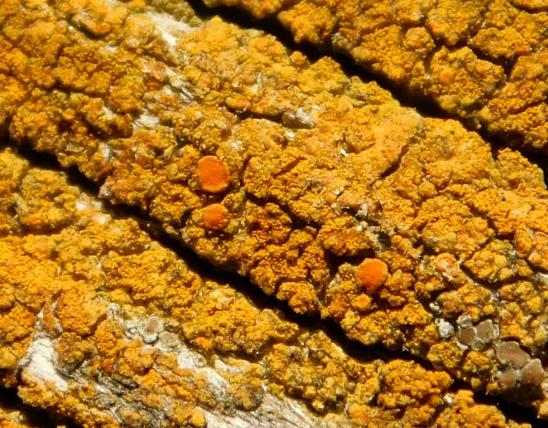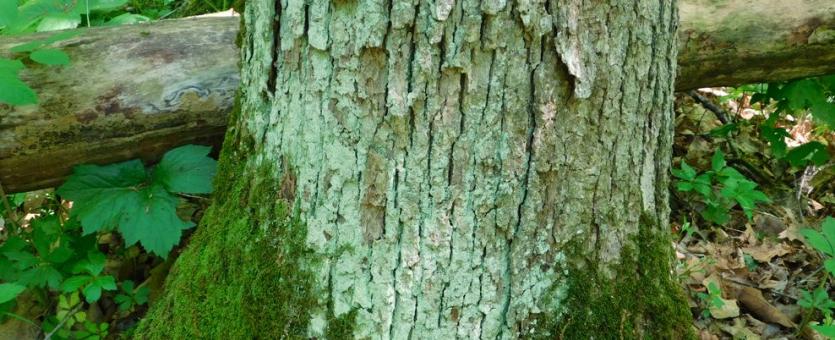
Dust lichens (Lepraria spp.) are usually a pale, minty green or gray and have a powdery, granular, or fluffy-looking surface. The surface is covered with soredia: tiny ball-like packets of fungus and algae that readily break away to start new lichens elsewhere (a form of vegetative reproduction). The clusters of soredia cause the surface to look dusty or grainy. Approximately six species in genus Lepraria are listed for Missouri.
Like other lichens that have a crustose growth form, dust lichens often look like a coat of paint on the surface they grow upon. Dust lichens are slightly different, however. Unlike typical crustose lichens, the main body (thallus) of dust lichens consists almost entirely of patches of soredia (a type of reproductive structure); this powdery, all-grainy growth form is considered a subtype of crustose lichens called leprose crustose lichens.
A lichen is an organism that results when a fungus species and an algae species join together. Although the relationship between the fungi and algae is quite intimate and integrated, the lichen that is formed does not much resemble either of the components. Learn more about lichens on their group page.
Lichens begin as tiny spots but may grow to cover several square inches. Groups of dust lichens may coalesce to cover large areas.
Statewide.
Habitat and Conservation
Dust lichens are often seen in small sheltered overhangs on damp rock faces or in hollows at the bases of trees. They sometimes cover large patches on cliff faces or other exposed rock.
Status
Lichens do not harm the trees they grow upon.
Life Cycle
The grainy or fluffy-looking soredia contain samples of both fungal and algal components, so when they are moved to a new location, they begin a complete new lichen — there’s no need for a young fungal-only component to link up with the correct algal component.
Sexual reproduction (such as the formation of cuplike apothecia, which is common in many other lichens) is unknown in this genus. Reproduction appears to be entirely vegetative, via the tiny soredia grains.
Human Connections
Dust lichens that live in shady indentations of tree trunks, in small rock crevices, and on rock faces contribute to the beauty of the landscape. Their cool, minty green color is eye-catching. Imagine how dull the woods would look if all the lichens weren’t there!
The genus name, Lepraria, and the name of the growth form, leprose, both come from the Latin leprosus, which means scurfy or scaly, deriving from the Greek word lepras, meaning leprosy (Hansen’s disease), which causes granular-looking lesions on the skin.
In other parts of the world, dust lichens may be more common, but in Missouri you don’t see them just everywhere. You have to hunt for them a little. Why is there a patch of dust lichens here, but not over there, in a habitat that seems equivalent? Once you start seeing them, you’ll notice they’re more common than you thought.
Ecosystem Connections
Dust lichens are some of the species that are preferred by lacewing larvae, which decorate their backs with the soredia particles. This camouflage makes the young lacewings look like wiggly chunks of lichen that have decided to get up and walk around.
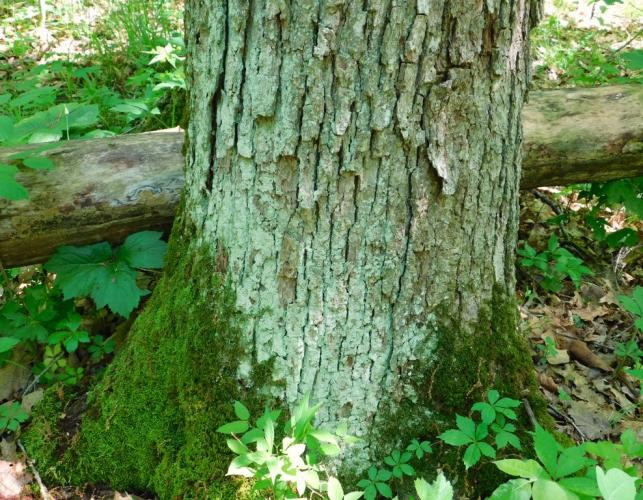
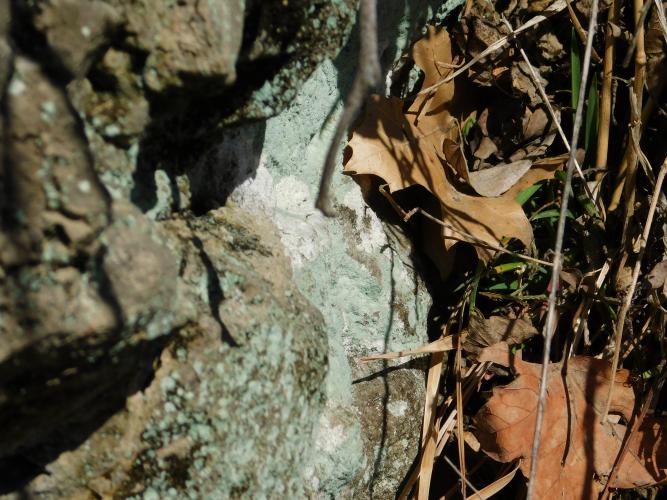
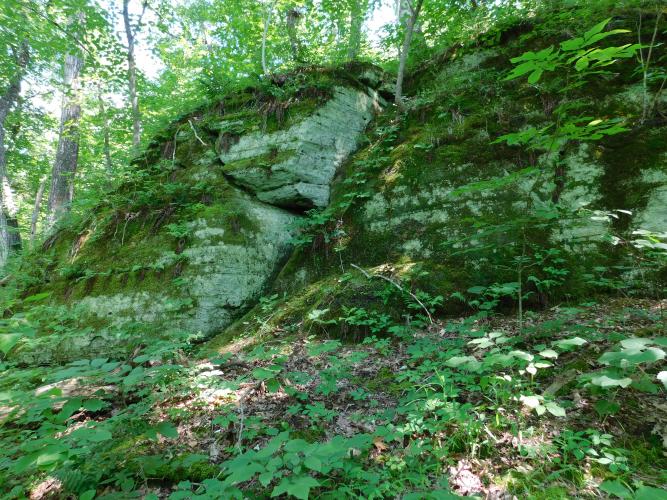
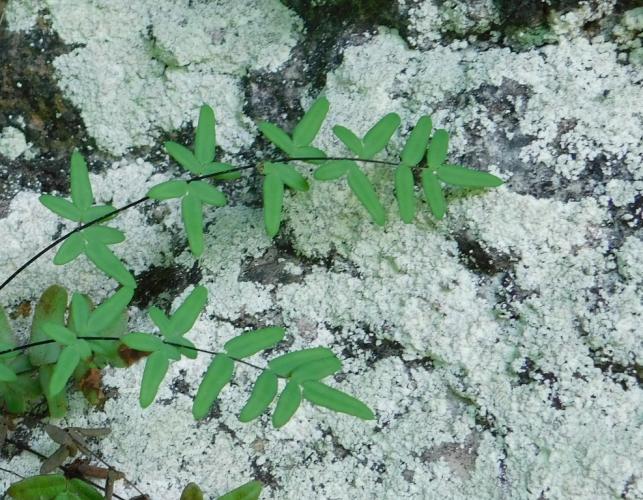
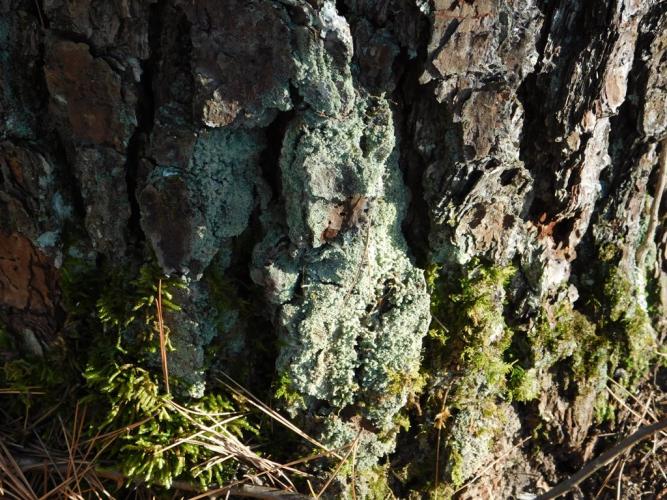
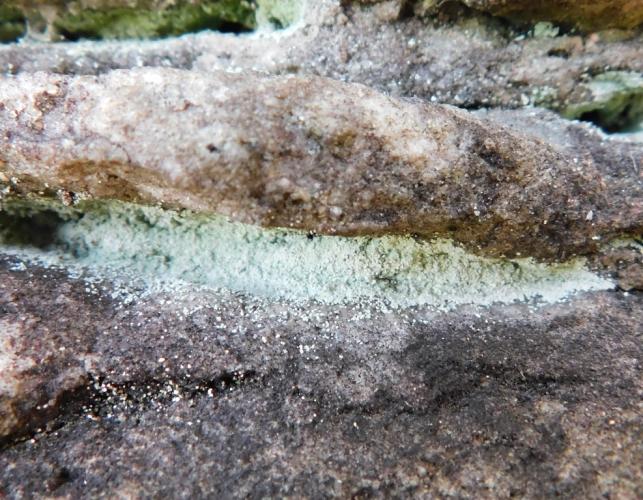
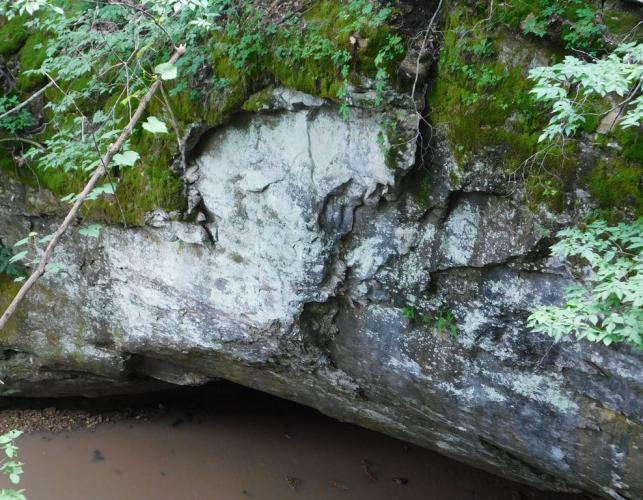
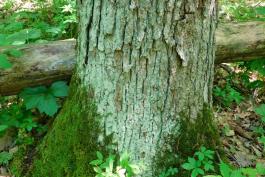
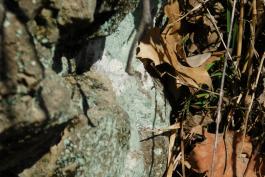
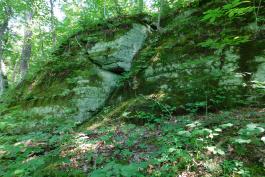
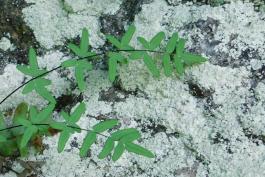
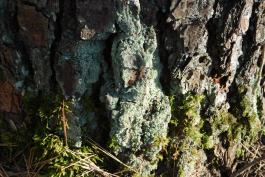
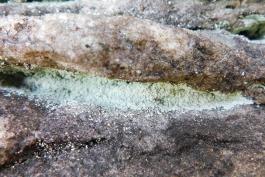
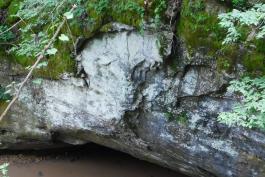
Mosses, liverworts, hornworts, and lichens seem rather similar, but these organisms are in very different groups. Mosses, liverworts, and hornworts are small, low plants usually found in damp habitats. Unlike more familiar plants, they lack veinlike structures and do not produce flowers or seeds — instead, they produce spores. Meanwhile, lichens are not plants at all: they are a collection of different fungi that have photosynthetic algae living within their tissues.






















